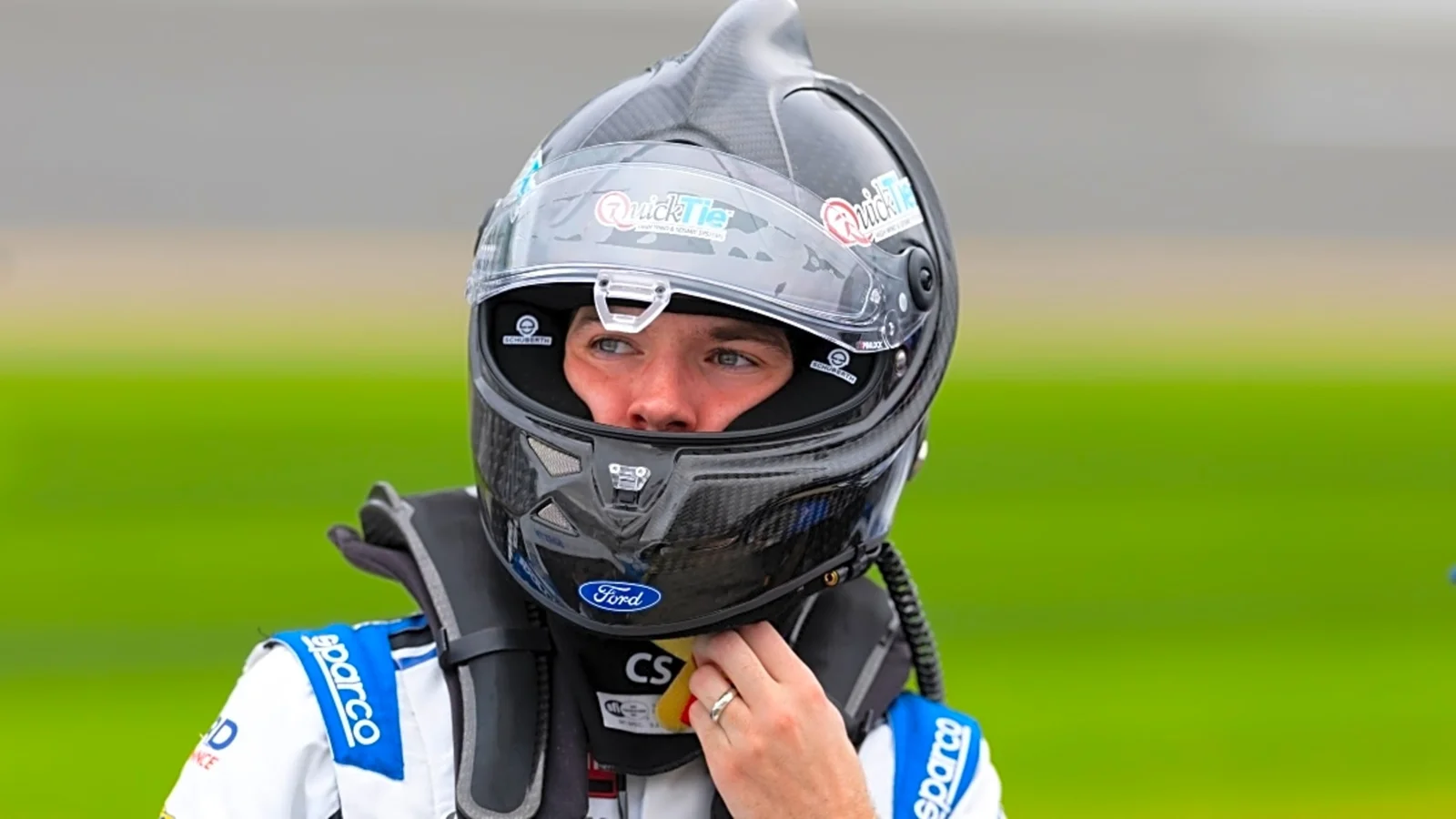Layne Riggs experienced a crushing setback at Darlington Raceway when a crucial pit road mistake cost him the race lead and severely affected his playoff prospects. The Layne Riggs Darlington pit road mistake illustrated just how quickly fortunes can change during a tense NASCAR Craftsman Truck Series postseason event.
Riggs Dominates Stage 2 With High Hopes
Before disaster struck on pit road, Layne Riggs was having a remarkable day at Darlington Raceway. After a commanding run in Stage 2, he proved his speed, overtaking seasoned drivers with the calm of an experienced racer, despite his young age. The No. 38 team’s success in the second stage was not only a confidence booster but a critical component in the quest for playoff points—each one potentially making the difference between advancing in the championship battle or seeing it slip away. Everything in the team’s strategy, pit service, and on-track execution aligned perfectly until the pressure of a vital pit stop changed their fate.
The importance of earning stage points under NASCAR‘s playoff structure cannot be overstated. Stage wins bolster a driver’s standing, with each point a shield against elimination as the championship field is trimmed. Riggs and his crew had performed with sharp focus, ensuring he was a frontrunner, until one error overshadowed their collective efforts after Stage 2.
The Pressure and Precision of Pit Road
Darlington’s pit road is infamously unforgiving, with every stop demanding faultless execution. As Riggs led the field onto pit lane after his impressive run, he and his team hoped for another quick, seamless service. The pit crew leaped into action with practiced efficiency, aiming to maintain track position and keep Riggs’ championship charge on course. Yet, an unpredictable hiccup—a problematic lug nut, equipment malfunction, or an inexplicable misstep—turned an ordinary stop into an excruciating wait.
With each agonizing second, the championship hopes faded a bit more. Riggs, confined to his seat, watched helplessly as car after car overtook him. The mechanical rhythm of pit stops that usually serves as a symbol of control became the source of frustration and heartbreak, with the race leader now relegated to fourth position.
Emotional Fallout for Driver and Crew
The intense disappointment was clear in Layne Riggs’ demeanor as he rejoined the race from fourth, knowing how much was riding on this round of the playoffs. The loss wasn’t simply about a few positions—it was the tangible slip of a potential win and valuable playoff points that were vital for survival in the NASCAR postseason. The emotional turbulence extended beyond Riggs; the pit crew, seasoned professionals deeply invested in their craft, carried the weight of the miscue alongside their driver.
For everyone on the team—driver, pit crew, and chief alike—the mistake was a shared setback. In motorsports, accountability is collective. The sting of what might have been lingers, especially when the driver’s performance had positioned the team on the brink of a breakthrough victory in front of racing fans and championship contenders alike.
Darlington’s Relentless Challenges
Darlington Raceway, known to many as the Lady in Black, has tested drivers and crews for generations. Its narrow groove, worn surface, and treacherous pit lane magnify every error. When Layne Riggs lost three spots during that fateful pit cycle, he handed over control of his playoff destiny to circumstances outside his reach. Every position at Darlington is hard-won and precious, making the effects of a pit road error exponentially more severe on such a historic track.
In the context of the NASCAR playoff system, where every point can mean survival or elimination, Riggs’ pit road mistake represents more than lost ground. For the Craftsman Truck Series competitors, avoiding disasters and capitalizing on stage wins form the foundation of a successful campaign. With only four drivers progressing each round, a single mistake becomes magnified—a reminder, especially poignant at Darlington, of how thin the line is between triumph and heartbreak.
Taking Lessons From Adversity
On the heels of disappointment, Layne Riggs and his team now face the difficult but vital work of learning from their pit road ordeal. Across NASCAR, top-performing teams use costly moments not as fuel for blame, but as an invaluable study tool. Reviewing every detail—video replays, pit equipment function, and procedural steps—they look for ways to prevent recurrence, protecting their championship ambitions moving forward in the series.
Riggs, despite the sting of missed opportunity, responded with maturity, refusing to shift responsibility or publicly criticize. His leadership in adversity could build greater cohesion and drive among his crew, traits witnessed repeatedly in the careers of icons who have survived the sport’s cruelest lessons. The capability to respond collectively and constructively after misfortune is what forges champions, not an absence of errors.
Enduring After a Devastating Setback
This painful incident at Darlington will not be the final word on Layne Riggs’ season, or even his career. Racing’s demanding nature means even the most talented, resilient professionals and teams—veterans and rising stars alike—face moments where heartbreak and hope are separated only by a few seconds’ misfortune. Many legendary drivers have suffered bitter defeats only to fight their way to future glory.
The NASCAR calendar offers little time for dwelling on disappointment. For Layne Riggs, the pit road mistake serves as both a harsh lesson and a motivator. The drive for redemption, fueled by talent and shaped by adversity, remains just one race away. Fans, competitors, and everyone at Darlington witnessed a stark reminder of how quickly things can unravel, but also how resilience and growth shape a champion’s path through the chaos of the postseason.
